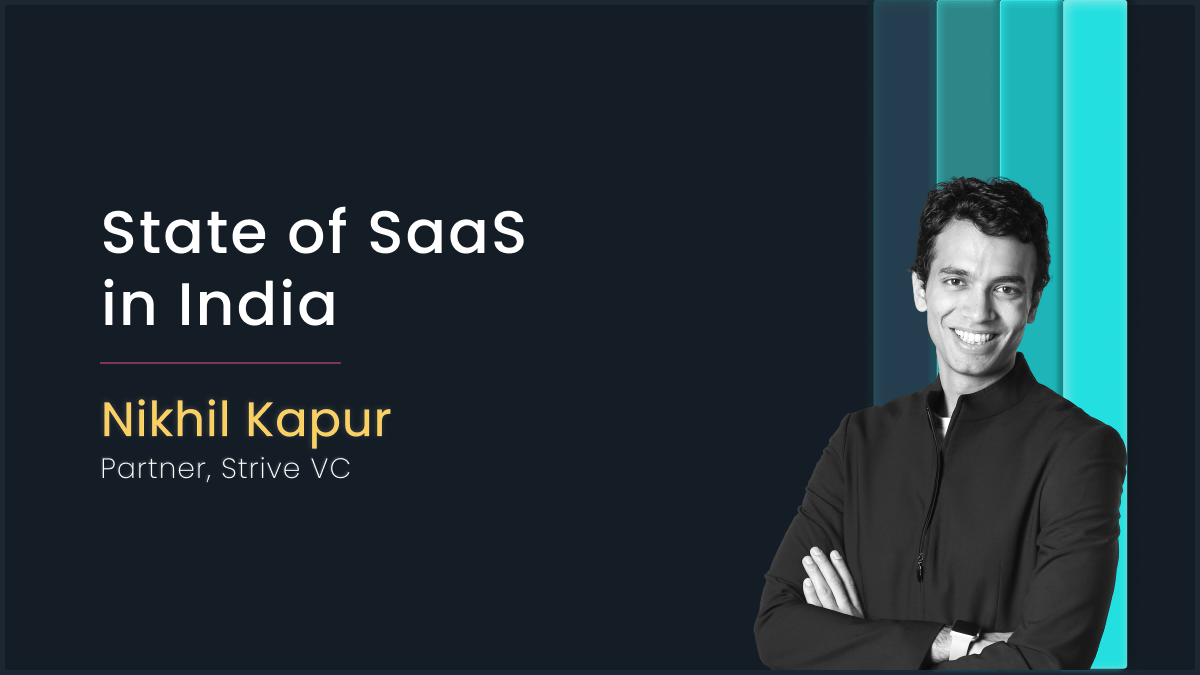Discussing the State of SaaS in India with Nikhil Kapur, a Partner at Strive VC
We discuss the different challenges faced by global and India-focused SaaS companies, and Nikhil shares the best practices for building a SaaS for India
Before we jump to this week’s episode, here is a math quiz for you:
An online e-commerce store’s marketing team is planning a sale to attract new customers. They're going to run ads for promotion with a cost per lead (CPL) of $1. They expect 5% conversion (leads -> customers), with each customer generating $25 in profit. Lastly, they have $5000 for prizes as the giveaway. Assuming their estimations are correct, how many leads would they need to generate to profit from this campaign?
>> Answer at the end of this email <<
As of December 2019, India accounted for 2.6% percent of the global SaaS ecosystem, growing at a rate of 36% YoY. It is estimated that by 2025, India will account for one-eighth of the global share reaching up to $10 billion in revenue.
Nikhil, a Partner VC at Strive who leads investments in India, shares his thoughts on the state of SaaS in India in our latest episode with Sunil.

Nikhil was passionate about coding right from school, and after graduating from college, he joined Microsoft as a software engineer, where he was part of the Microsoft Office mobile team. After working there for three years, he quit and started his own company, TommyJams, a tech-enabled artist management platform.
Key Takeaways
In the next 10 years, we’ll see more product-led companies like Postman, and India-focused SaaS companies like Khatabook come up
Indian SMEs might not always be enough to build a $100M ARR business. To do that, your business model needs to adapt (example shared in this episode was a fintech mobile app charging a commission for every transaction)
There are five pillars for the startup ecosystem in India – Funding, Startups, People, Technology, and Market
Dear Math, I thought we broke up after graduation
The solution to the math quiz above is 20,000 leads. Here’s how you calculate this:
Total spends on this promotion is: (CPL*number of leads) + (the giveaway prize)
Total profits through this promotion will be: (conversion rate) * (number of leads) * (profit margin)
In order to break even, the above two equations need to be equal. Approaching this algebraically,
(CPL*number of leads) + (the giveaway prize) = (conversion rate) * (number of leads) * (profit margin)
i.e., 1*x + 5000 = 0.05*x*25 (assuming x is the number of leads the marketing team has to generate)
By solving for x in this equation, x + 5000 = 1.25x, we get x = 20000, meaning the marketing team has to get more than 20,000 leads to generate a profit from this sale.
What’s Next
On a similar note, we also spoke about the state of SaaS in India with Aviral Bhatnagar, the founder of A Junior VC. Do you think he has conflicting opinions or does it add more strength to Nikhil’s views? If you cannot wait to find out, let us know and we’ll sneak you an early copy of the episode 😁


